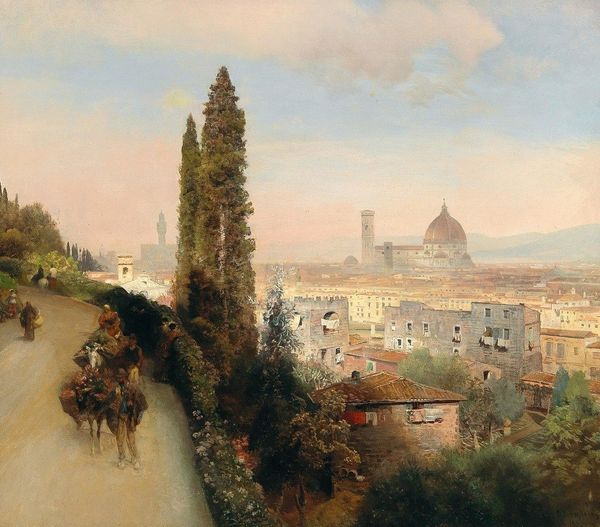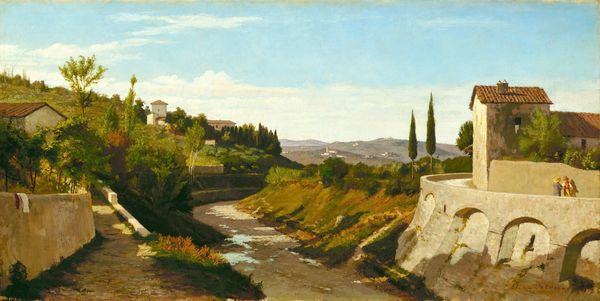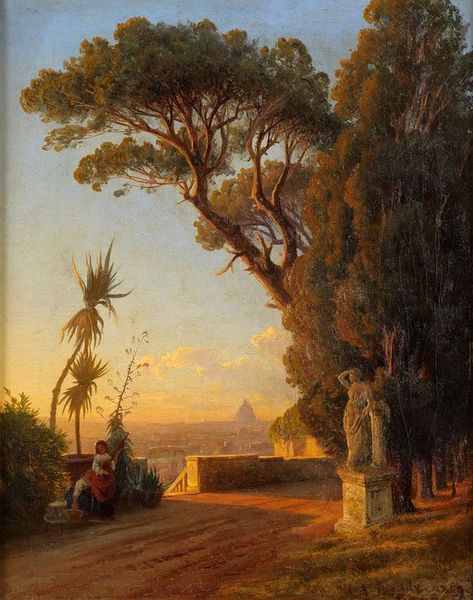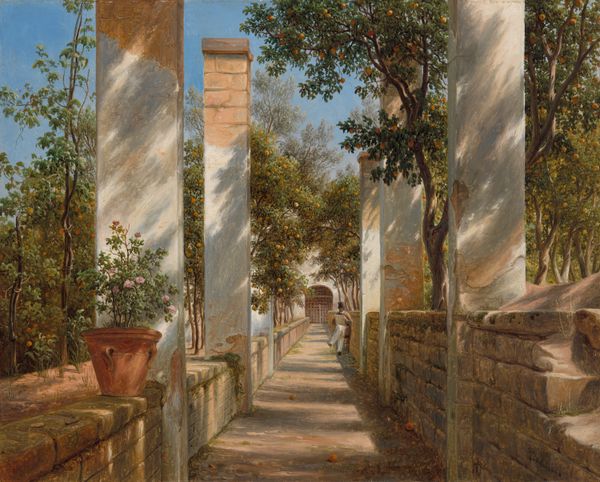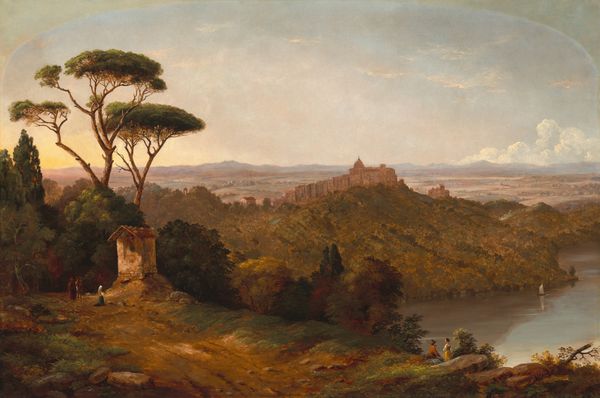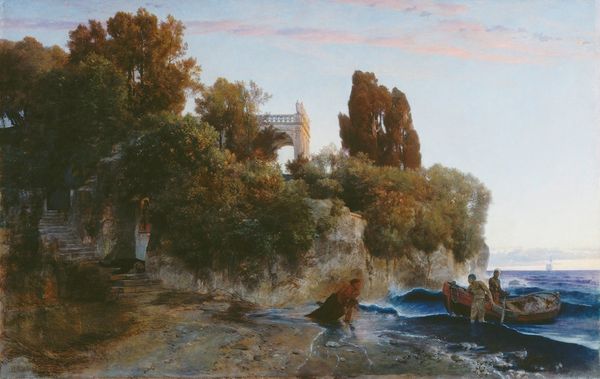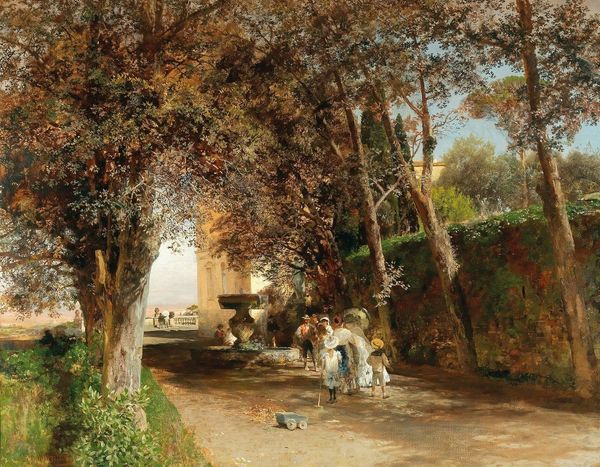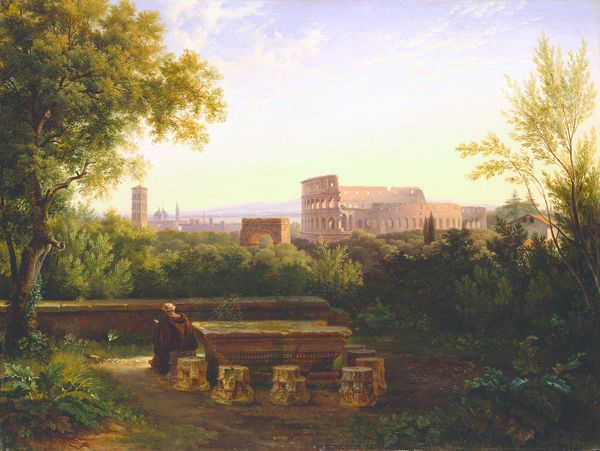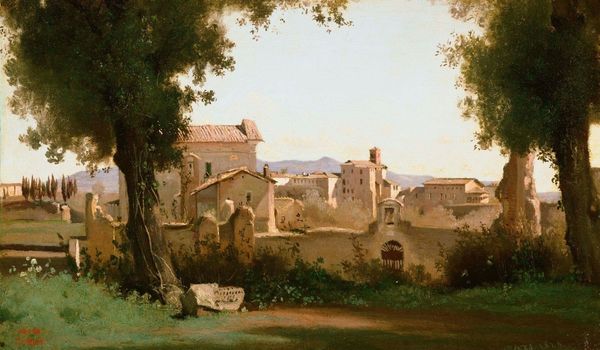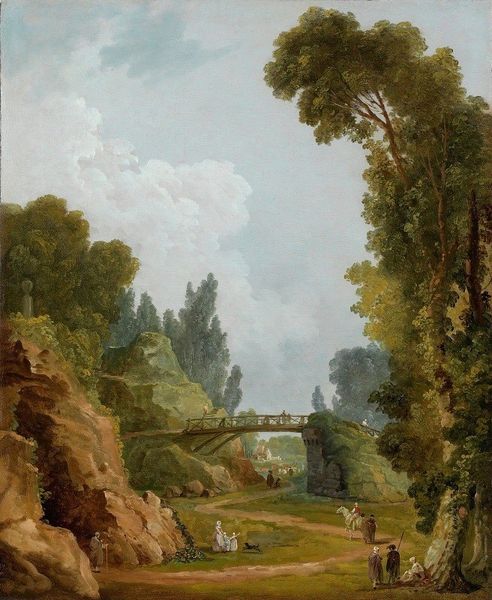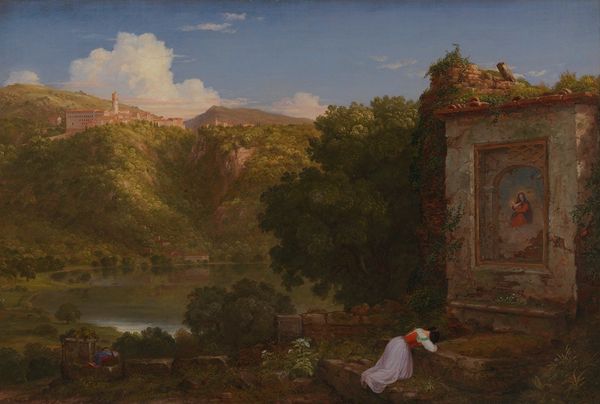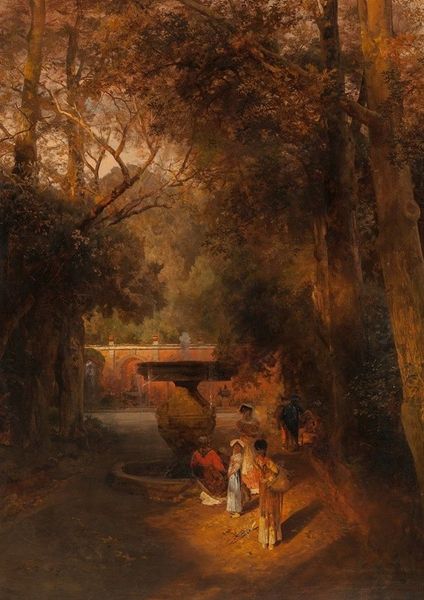
painting, oil-paint
#
painting
#
oil-paint
#
landscape
#
oil painting
#
romanticism
#
cityscape
#
italian-renaissance
#
realism
Copyright: Public Domain: Artvee
Editor: Here we have "A view of the garden of Villa d’Este in Tivoli, near Rome," an oil painting possibly by Oswald Achenbach. The textures in this garden scene feel incredibly detailed, capturing the light so vividly. What do you see in this piece from a materialist point of view? Curator: This painting is less about pure representation and more about the societal conditions surrounding leisure and artistry. Oil paint, readily available to artists of the time, allowed for the illusion of depth and texture you mentioned. The garden itself, meticulously designed and maintained, speaks volumes about power structures and access to resources. Who benefits from these idealized spaces, and who provides the labor to create them? Consider also the commodification of these scenes – landscapes like this became desirable items for the bourgeoisie. Editor: So, you're saying it's not just a pretty garden, but also reflects a whole system of production? How did the *act* of painting contribute to this system? Curator: Precisely. The artist, as a skilled laborer, is part of that system. His choice of perspective, his rendering of light – these are not just aesthetic decisions, but reflect an engagement with the expectations of his patrons and the market. He is crafting an appealing commodity. Was this painting commissioned or painted speculatively? How might that influence its production? Editor: That makes me think differently about landscape paintings in general. It’s fascinating to think about who funded this "view," and how the work and the materials were part of a larger commercial exchange. Curator: Indeed. By considering the materials, labor, and social context, we gain a more comprehensive understanding of the painting and its place in the world. Thinking about these factors changes our perception and shifts the conversation from purely aesthetic pleasure. Editor: Absolutely. Looking at this work with an eye to labor, resources, and historical systems brings the scene to life on a whole new level. Thanks for the illuminating perspective!
Comments
No comments
Be the first to comment and join the conversation on the ultimate creative platform.
